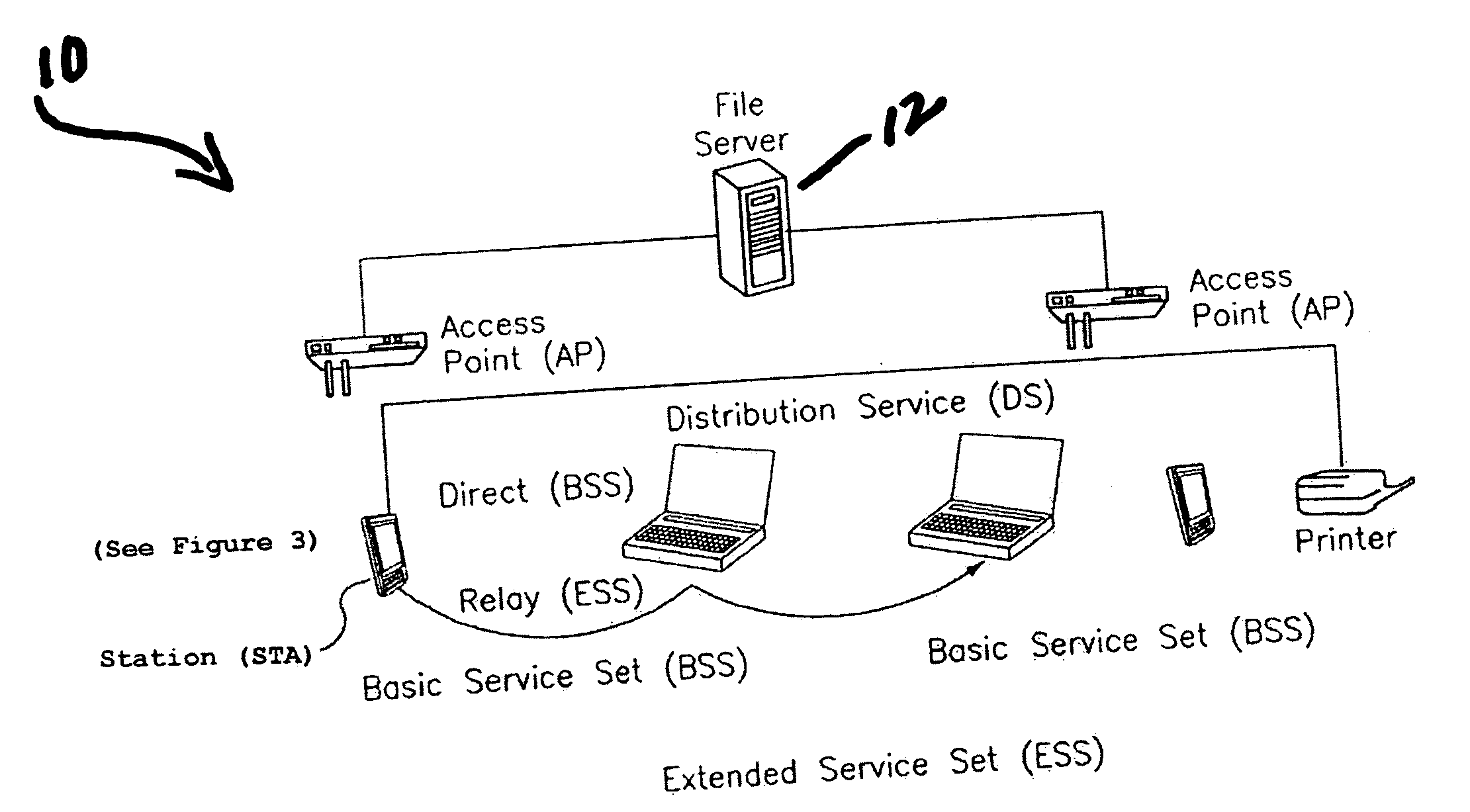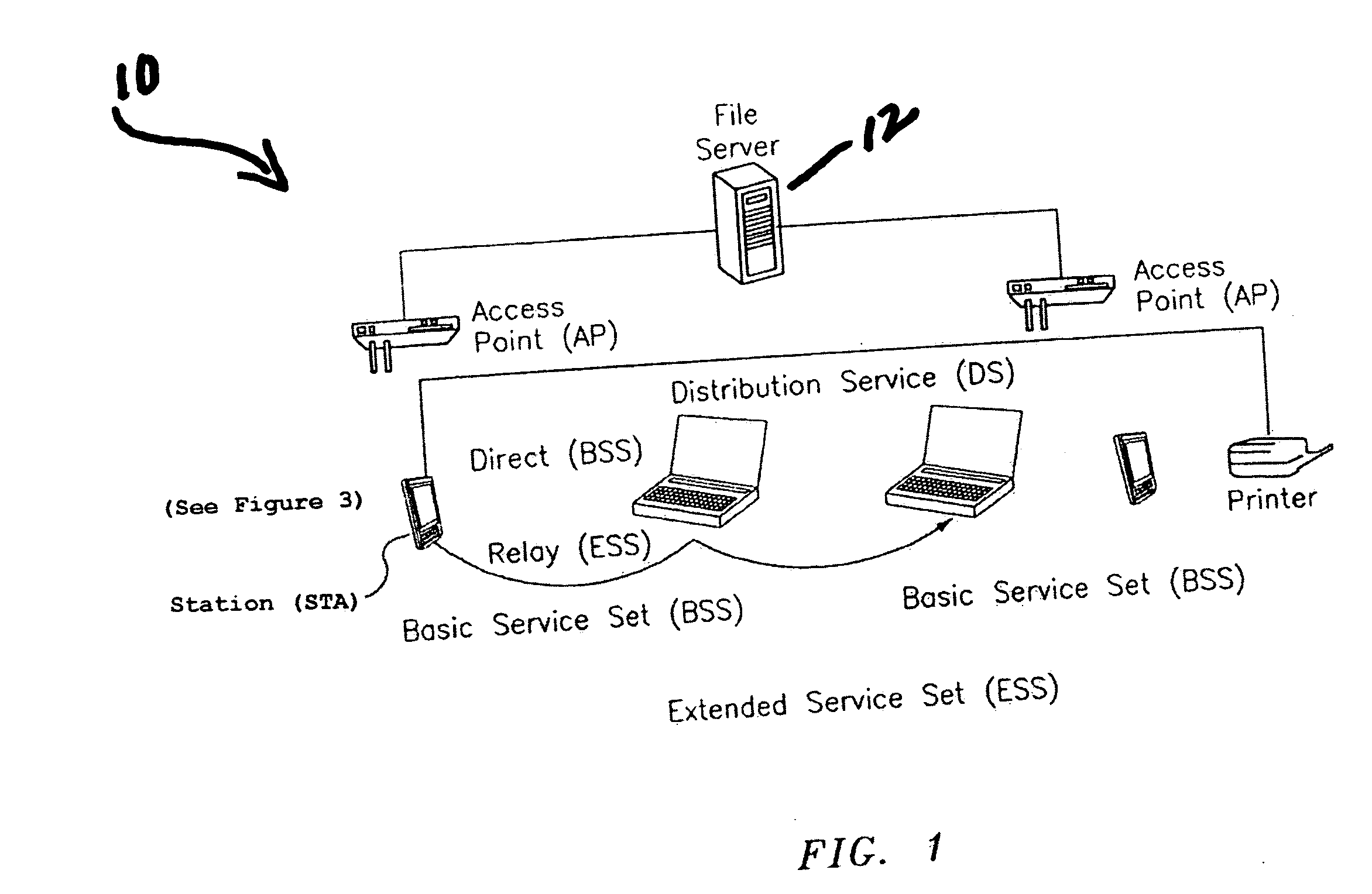Method and apparatus for detecting trends in received signal strength
a technology of received signal strength and trend detection, applied in the direction of electrical equipment, radio transmission, transmission, etc., can solve the problems of wlan data link loss either abruptly or gradually, loss of certain number of packets, etc., to avoid unnecessary scanning of ho, reduce power consumption, and reduce the effect of power consumption
- Summary
- Abstract
- Description
- Claims
- Application Information
AI Technical Summary
Benefits of technology
Problems solved by technology
Method used
Image
Examples
example 1
[0127]If one assumes that the STA user is static within a BSA, and the measured signal strength varies between, say, −75 dBm and −85 dBm. However, the BER is still acceptable in these conditions, say, less than 10−5. Now, because the measurements are median filtered indicates less variation, say between −79 dBm and −81 dBm, and if the known link loss threshold is −90 dBm, the predicted link loss time is never less that the time needed for HO (say, 2 seconds) and the user can enjoy WLAN coverage further away from the AP that has been previously possible.
example 2
[0128]The STA user walks away from the AP she is currently connected to and the signal starts to degrade gradually. When the predicted link loss time is small enough ‘Link loss imminent’ indication is given and the HO is initiated in time to perform either horizontal or vertical HO. See, for example, that shown in FIGS. 8-10.
Implementation of the Functionality of the Modules
[0129]The functionality of the STA 30 described above may be implemented in the modules 32 and 34 shown in FIG. 3. By way of example, and consistent with that described herein, the functionality of the module 32 and 34 may be implemented using hardware, software, firmware, or a combination thereof, although the scope of the invention is not intended to be limited to any particular embodiment thereof. In a typical software implementation, the module 32 and 34 would be one or more microprocessor-based architectures having a microprocessor, a random access memory (RAM), a read only memory (ROM), input / output devices...
PUM
 Login to View More
Login to View More Abstract
Description
Claims
Application Information
 Login to View More
Login to View More - R&D
- Intellectual Property
- Life Sciences
- Materials
- Tech Scout
- Unparalleled Data Quality
- Higher Quality Content
- 60% Fewer Hallucinations
Browse by: Latest US Patents, China's latest patents, Technical Efficacy Thesaurus, Application Domain, Technology Topic, Popular Technical Reports.
© 2025 PatSnap. All rights reserved.Legal|Privacy policy|Modern Slavery Act Transparency Statement|Sitemap|About US| Contact US: help@patsnap.com



